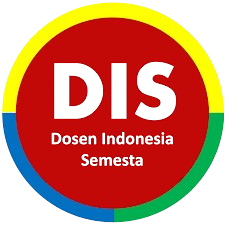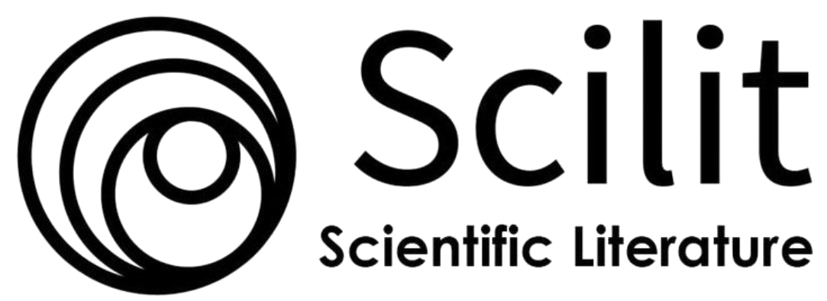Comparative Translation Qualitty Of Religious Terms In Umberto Eco’s The Name Of The Rose
DOI:
https://doi.org/10.36526/ln.v5i2.1608Keywords:
Translation quality, Comparative Study, Religious Terms, The Name of the RoseAbstract
This research is a comparative study of translation using descriptive qualitative approach. It aims at examining the quality (accuracy and acceptability levels) of religious terms translation of two translation works of an outstanding qualities novel written by Umberto Eco entitle The Name of the Rose. To be exact, this research airmed to: 1). Measure the translation accuracy and acceptability of religious terms in The Name of the Rose published by Jalasutra, 2). Measure the translation accuarcy and acceptability of religious terms in The Name of the Rose published by Bentang Pustaka, and 3). Describe the differences and similarities of the translation accuracy and acceptability of religious terms published by Jalasutra and Bentang Pustaka.
The research data are religious terms found in The Name of the Rose which is collected using documentation method. The collected data are analyzed by using three following steps, 1). Comparing, 2). Describing and 3). Reporting. To assess translation accuracy and acceptability, the researcher used the translation quality assessment instruments by Prof. Mangatur Nababan. The research results that the translation accuracy and acceptability of The Name of the Rose published by Jalasutra and Bentang Pustaka are good. Both provide accurate translation of religious terms since they successfully translate 321 terms accurately. However, Bentang Pustaka translates 14 terms less accurately and 6 terms with inaccurate while Jalasutra translates 10 terms less accurately and 10 terms with inaccurate. The different quality of accuracy and acceptability was due to the translators’ different consideration between maintaining the accuracy and acceptability level or reaching high readability translation. The conclusion is that Bentang Pustaka provides better translation than Jalasutra.
References
Aji, W., Nababan, M. R., & Santosa, R. (2017). Comparative Translation Quality of Judgement In Novel The Adventures Of Tom Sawyer (Sistemic Fuctional Linguistic in Translation Studies). Lingua Didaktika: Jurnal Bahasa dan Pembelajaran Bahasa, 11(1), 36-52.
Alghamdi, R. (2016). Translating Religious Terms and Culture in" The Sealed Nectar”. UK: University of Leeds.
Aresta, R., Nababan, M. R., & Djatmika, D. (2018). The Influence of Translation Techniques on the Accuracy and Acceptability of Translated Utterances that Flout the Maxim of Quality. Humaniora, 30(2), 176-191.
Arkitraf. (n.d.). In Kbbi.Kemdikbud.go.id dictionary. Retrieved from https://kbbi.kemdikbud.go.id/entri/arkitraf
Ahrenberg, L. (2017). Comparing Machine Translation and Human Translation: a Case Study. In RANLP 2017: The First Workshop on Human-Informed Translation and Interpreting Technology, HiT-IT, 21-28.
Architrave (n.d.). In Merriam-Webster’s collegiate dictionary. Retrieved from https://www.merriam-webster.com/dictionary/architrave
Azti, I. F., Nababan, M. R., & Djatmika, D. (2019). The Analysis of the Results of Acceptability on the Translation Results in the Unedited Version and Edited Version in the Novel “After You.” International Journal of Multicultural and Multireligious Understanding, 6(4), 422-432.
Fatmawati, F. I., & Setiawan, T. (2019). Kualitas Terjemahan Lirik Lagu “Munajat Cinta” Bahasa Indonesia-Jawa. Widyaparwa, 47(1), 11-20.
Fish, David. (2017) Book Review: The Name of the Rose by Umberto Eco. Retrieved from https://medium.com/@dsfish/book-review-the-name-of-the-rose-by-umberto-eco-265be0c09e79
Fitria, T. N. (2018). Translation Technique of English Abstract Translation in Journal Edunomika In 2018. English and Literature Journal, 5(2), 145-160.
Hariyanto, S. (2015). Website Translation (second edition). Malang: Gerai Dinar Malang.
Hashemian, M., & Arezi, A. (2017). A Study of Applied Strategies in Translating Idiomatic Expressions in Two Movie Subtitles: Bring It On & Mean Girls. Research in English Language Pedagogy, 3(2), 80-93.
Herlambang, M. A. K. (2017). A Study of Translation Equivalence and Acceptability on the Subtitle of Intel Advertisements. Depok: Sanata Dharma University.
Herman, Juniyati, R. (2019). An English Oblique Translation Analysis of “Twitter” Social Networking Website into Indonesian: An Applied Linguistics Study. International and Public Affairs, 3 (1), 6-12.
Indiarti, W., & Wangi, W. (2015) Tingkat Keberterimaan Tejemahan Istilah Budaya Osing: Sebuah Studi Kasus Terpancang. Ranah: Jurnal Kajian Bahasa. 4 (1), 22.
Japhari, S. (2019). Translation of the Book Titled ‘Authentication of Hadith: Redefining the Criteria’ from English into Swahili: An Analysis of Translation Procedures. International Journal of Linguistics, Literature and Translation (IJLLT).
Karina, L. (2018). An Analysis of Translation Strategies Found in New Moon into Dua Cinta by Monica Dwi Chresnayani. Surakarta: Universitas Muhammadiyah Surakarta.
Mardliyah, S. A. (2018). Translation Technique and Its Acceptability of Islamic Terms in Negeri 5 Menara Novel. Jakarta : UIN Syarif Hidayatullah.
Nababan, M., & Nuraeni, A. (2012). Pengembangan Model Penilaian Kualitas Terjemahan. Surakarta: Sebelas Maret University.
Nida, E. A., & Taber, C. R. (Eds.). (1982). The Theory and Practice of Translation (Vol. 8). Brill Archive.
Prafitasari, A., Nababan, M. R., & Santosa, R. (2019). An Analysis of Translation Technique and Translation Quality in Poem Book Entitled Love & Misadventure. IJELTAL (Indonesian Journal of English Language Teaching and Applied Linguistics), 3(2), 313-333.
Prasetya, I. Z., Hartono, R., & Yuliasri, I. (2019). Accuracy, Readability and Acceptability in the Translation of Android Xiaomi Redmi Note 4. English Education Journal, 9(3), 382-390.
Sari, M. (2019). Analysis of Poetry Images in Antologi Sastra Lelaki di Gerbang Kampus by Gemasastrin Students. In Proceeding of The International Conference on Literature, 1(1), 491-498.
Savitri, Y., Suparman, ujang., & Yufrizal, H. (2018). An Analysis of Students’ Translation Quality (Accuracy, Readability and Acceptability) in Translating An Informative Text Entitled Yseali to Indonesian. Bandar Lampung: University of Lampung.
Simanjuntak, F. (2019). A Study on Quality Assessment of the Translation of an Abstract Text English Idioms Errors Made by Jordanian EFL Undergraduate Students by Google Translate. Online Submission, 2(4), 38-49.
Soemanto, Nin Bakdi (Translator). (2008). The Name of the Rose.Yogyakarta: Bentang Pustaka.
Suparyati, Ani & Sobar Hartini (Translators). (2004). The Name of the Rose. Yogyakarta: Jalasutra.
Suryawinata, Z., & Hariyanto, S. (2016). Translation: Bahasan Teori & Penuntun Praktis Menerjemahkan (Edisi Revisi). Malang: MNC.
Translate. (n.d.). In Dictionary.Cambridge.org dictionary Retrieved from https://dictionary.cambridge.org/dictionary/english/translate
Translate. (n.d.). In Merriam-Webster.com dictionary. Retrieved from https://www.merriam-webster.com/dictionary/translate
Trinitas. (n.d.). In Kbbi.Kemdikbud.go.id dictionary. Retrieved from https://kbbi.kemdikbud.go.id/entri/trinitas
Tritunggal. (n.d.). In Kbbi.Kemdikbud.go.id dictionary. Retrieved from https://kbbi.kemdikbud.go.id/entri/tritunggal
Tyulenev, S. (2017). Introduction: Toward Comparative Translation and Interpreting Studies. Translation and Interpreting Studies. 12(2). 197-212.
Weaver, William. (1983). The Name of the Rose. US: Harcourt.
Downloads
Published
How to Cite
Issue
Section
License
This work is licensed under a Creative Commons Attribution-ShareAlike 4.0 International License.


















